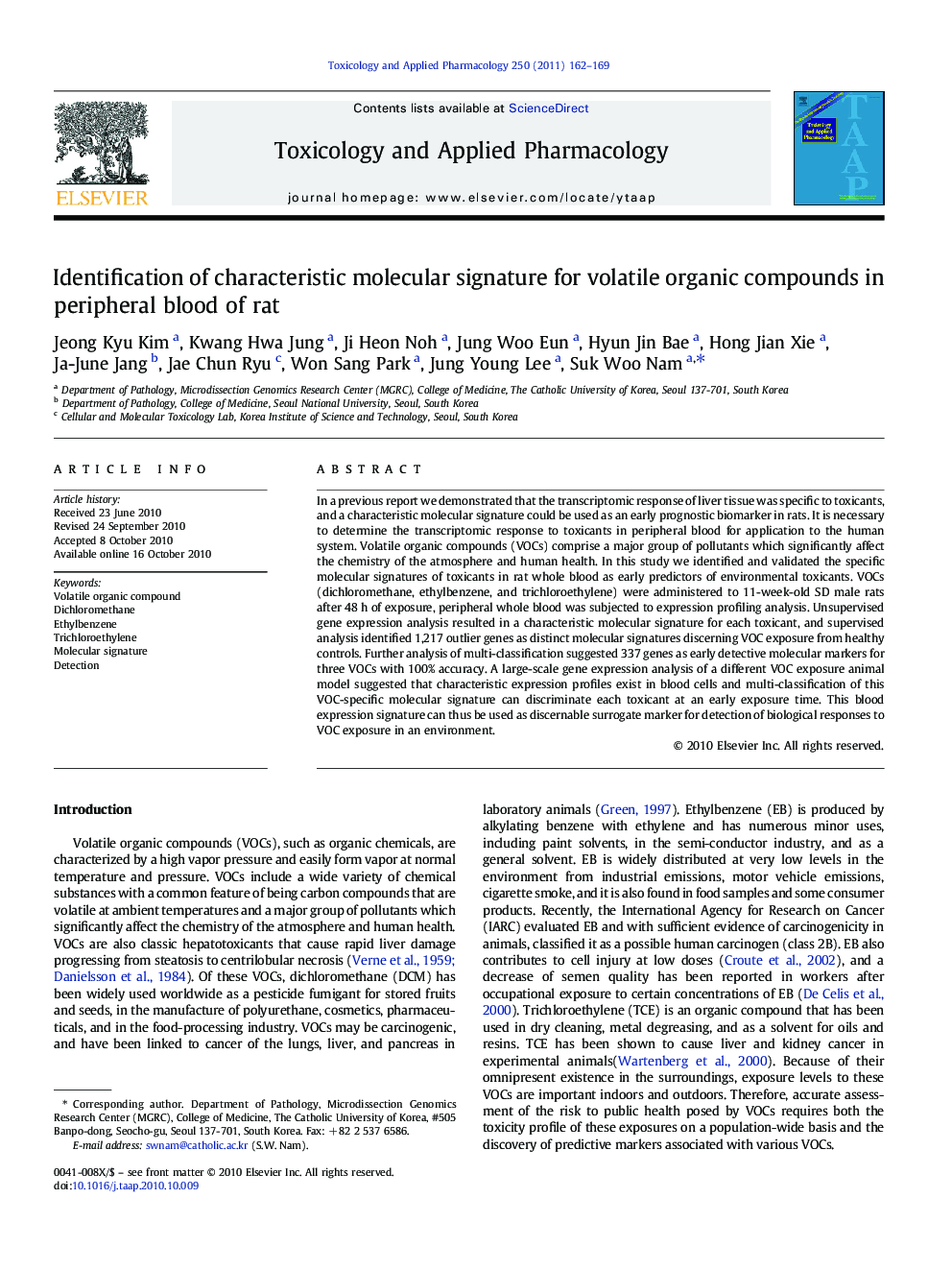| Article ID | Journal | Published Year | Pages | File Type |
|---|---|---|---|---|
| 2569901 | Toxicology and Applied Pharmacology | 2011 | 8 Pages |
Abstract
In a previous report we demonstrated that the transcriptomic response of liver tissue was specific to toxicants, and a characteristic molecular signature could be used as an early prognostic biomarker in rats. It is necessary to determine the transcriptomic response to toxicants in peripheral blood for application to the human system. Volatile organic compounds (VOCs) comprise a major group of pollutants which significantly affect the chemistry of the atmosphere and human health. In this study we identified and validated the specific molecular signatures of toxicants in rat whole blood as early predictors of environmental toxicants. VOCs (dichloromethane, ethylbenzene, and trichloroethylene) were administered to 11-week-old SD male rats after 48Â h of exposure, peripheral whole blood was subjected to expression profiling analysis. Unsupervised gene expression analysis resulted in a characteristic molecular signature for each toxicant, and supervised analysis identified 1,217 outlier genes as distinct molecular signatures discerning VOC exposure from healthy controls. Further analysis of multi-classification suggested 337 genes as early detective molecular markers for three VOCs with 100% accuracy. A large-scale gene expression analysis of a different VOC exposure animal model suggested that characteristic expression profiles exist in blood cells and multi-classification of this VOC-specific molecular signature can discriminate each toxicant at an early exposure time. This blood expression signature can thus be used as discernable surrogate marker for detection of biological responses to VOC exposure in an environment.
Keywords
Related Topics
Life Sciences
Environmental Science
Health, Toxicology and Mutagenesis
Authors
Jeong Kyu Kim, Kwang Hwa Jung, Ji Heon Noh, Jung Woo Eun, Hyun Jin Bae, Hong Jian Xie, Ja-June Jang, Jae Chun Ryu, Won Sang Park, Jung Young Lee, Suk Woo Nam,
